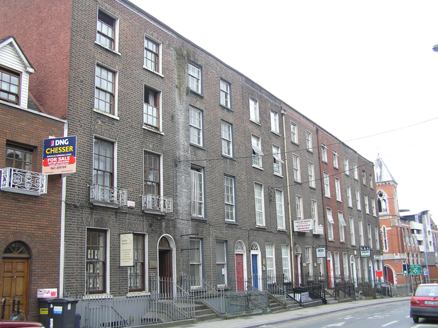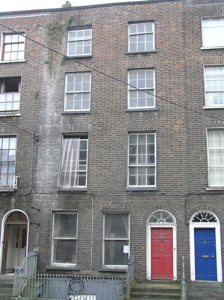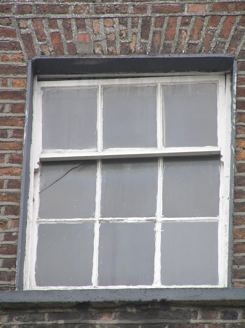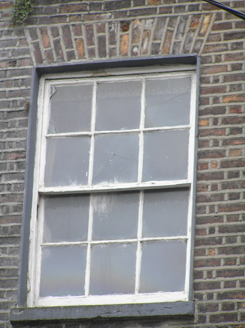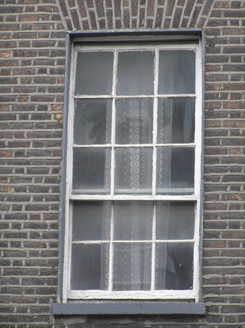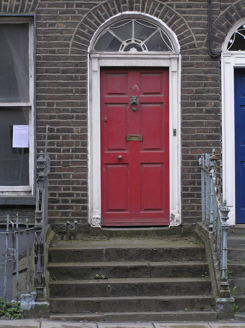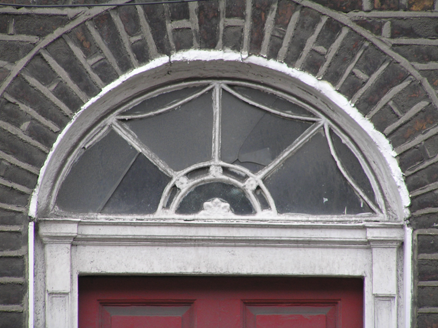Survey Data
Reg No
21517074
Rating
Regional
Categories of Special Interest
Architectural, Artistic
Original Use
House
In Use As
Unknown
Date
1820 - 1840
Coordinates
157317, 156727
Date Recorded
17/07/2005
Date Updated
--/--/--
Description
Terraced two-bay four-storey over basement house, built c. 1830, with a rubble stone coach house to the rear. Pitched slate roof hidden to front behind a parapet wall. Rendered chimneystacks east party wall. Red brick façade laid in Flemish bond with cement re-pointing. Torch-on felt flashing to parapet wall. Painted rendered basement elevation. Cement rendered red brick rear elevation. Square-headed window openings, red brick arches, patent rendered reveals, limestone sills and three-over-three (upper sash replaced) six-over-six and six-over-nine and one-over-one (glazing bars most likely removed) timber sash windows to front elevation. Camber-arched window openings to rear elevation, with rendered reveals, limestone sills and three-over-three timber sash window to second floor level and replacement timber casement windows elsewhere. Round-arch door opening with patent rendered reveals, limestone threshold step, and inset timber doorframe comprising: panelled uprights joined by slender lintel entablature and lead detailed webbed fanlight above. Original flat-panelled timber door leaf with lion's head door knocker. Front door opening onto limestone platform with wrought-iron bootscraper flanked by limestone plinth wall supporting wrought-iron railings with cast-iron rail posts with pineapple finials. Railings return to enclose the front site basement area. Rubble limestone coach house with three centred red brick arch retaining plank timber frame and gates. Square-headed loft window opening with a six-paned window. Pitched corrugated metal roof covering.
Appraisal
This terraced house is located within a terrace of seven houses which, despite the location on an incline, shares a uniform parapet height and a relatively uniform fenestration arrangement. The acclivity is accommodated by maintaining the lowering the basement level as the hill rises. This house is largely intact and the coach house, despite its significant alterations, continues to contribute to the architectural ensemble of this house.
